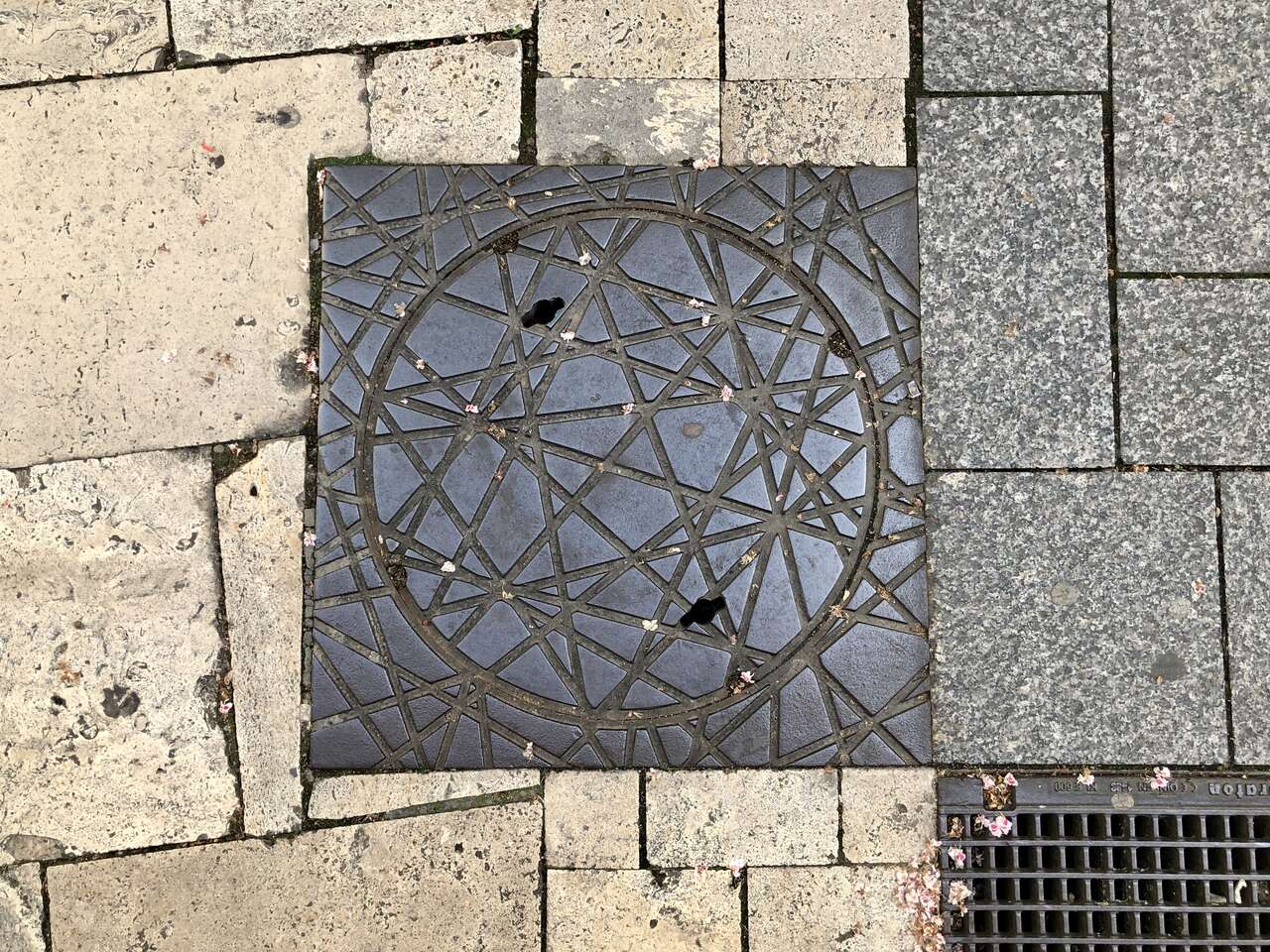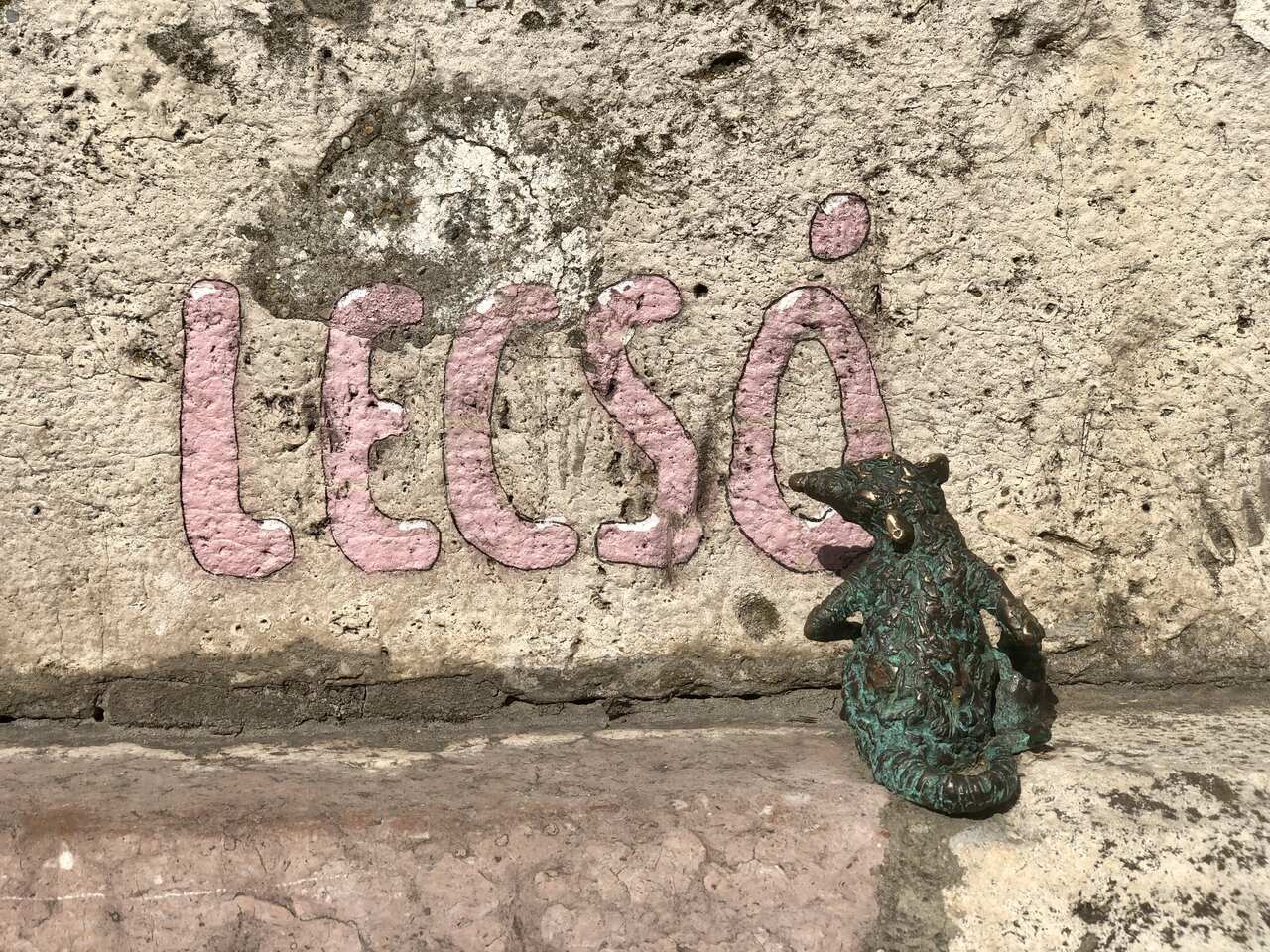PHOTOS: 6 small symbols of Budapest

Many people are familiar with the main symbols of Budapest — the Parliament, Fisherman’s Bastion, St. Stephen’s Basilica, beautiful bridges, and other great attractions. However, every city possesses its own small distinctive features with which it is associated. In London, these are the iconic red telephone booths. In Berlin, there is the charming little traffic light sign, a green man known as Ampelmann. In Prague, red address signs stand out. Similarly, Budapest boasts its own unique details that make it memorable. Let’s explore 6 small symbols of Budapest that leave a lasting impression and complement the city’s appearance.
Author of the article: Grishanova Natalia
Red mailboxes
At the top of this list are the iconic red mailboxes. They are bright and beautiful, capturing the attention of both Budapest residents and visitors. Originally designed for the Hungarian Industrial Exhibition in 1885, these mailboxes were proudly called “letter cabinets.” Remarkably, they have retained their almost unchanged form to this day.
In the early 2000s, there was a proposal to replace these historic mailboxes with more modern versions due to concerns that large envelopes couldn’t fit and signs of deterioration. However, the city residents were disappointed by this news: these sturdy red mailboxes had become integral to the cityscape over their nearly 150-year existence and it is a terrible idea to remove them from the streets. Consequently, a decision was made to preserve them, albeit with minor modifications, ensuring they continue to grace the streets while serving their primary function.
Therefore, whether you’re a postcrossing enthusiast or simply wish to send a heartfelt letter, feel assured dropping it into one of these iconic red mailboxes. The post office will dutifully handle its delivery.
Manhole covers
Budapest’s manhole covers constitute a distinctive form of urban art. Some feature a postal horn, others boast intricately carved patterns, while some are adorned with stripes, inscriptions, and even coats of arms. The variety is huge. One might think that manhole covers are mere trifles, hardly worth noticing. However, in Budapest, they are so exquisitely crafted that one can scarcely pass by them without being captivated. Interestingly, Budapest’s manhole covers are of such remarkable beauty and quality that they find their way into collections dedicated to beautiful manhole covers. They are even featured on T-shirts and as necklaces.
Raven with a ring in its beak
Let’s rewind a few centuries back to when the country was under the rule of King Mátyás Hunyadi, better known as Mátyás Corvin. Mátyás is a typical Hungarian name, while Hunyadi is the surname of a powerful family in Hungary. “Corvin” is a nickname that translates to “raven,” a bird that holds great significance in Hungarian culture.
A raven, clutching a golden ring in its beak, perches atop the gate of the Royal Palace. The same raven embellishes the spire of Mátyás Church. You’ll find the raven depicted on cafe signs and in the form of sculptures adorning the balconies of Budapest residents. But how did Mátyás come by such a nickname? There are numerous legends that attempt to answer this question, with perhaps the following being the most popular version.
Amidst the twists and turns of the Hunyadi family’s conflicts with the Czech king, 14-year-old Mátyás Hunyadi and his elder brother László found themselves imprisoned in Prague. Unfortunately, László met an untimely end — he was beheaded. Yet fate soon took a turn, as the Czech king himself passed away. Legend has it that in order to free her son, Mátyás’s mother, Erzsébet Szilágyi, dispatched a raven bearing a ring in its beak to Prague — the ring bore the coat of arms of the Hunyadi family. The story goes that the raven undertook a non-stop flight from Transylvania to Prague, delivering the ring to László Garai, the palatine who had previously supported the Czech king but agreed to release Mátyás.
According to the legend, it was from that point onward that Mátyás acquired the moniker “Corvin,” and the image of a raven clutching a ring became associated with his coat of arms. However, this is merely a captivating legend. It is known that a raven holding a ring in its beak was a symbol on the family coat of arms of Mátyás’s father, János Hunyadi.
Nevertheless, what is irrefutably true is that during Mátyás Corvinus’s reign, Hungary ascended to the pinnacle of its power. He was not only a triumphant military leader but also a generous patron who aspired to foster a strong, unified nation, erect magnificent palaces, and establish the greatest library in Christendom. These endeavors earned him the reputation of being the foremost king and endeared him to the populace, which explains why the raven remains an esteemed emblem, frequently encountered throughout Budapest.
Address signs
There are several types of address signs in Budapest. Some are black and white, indicating the direction of house numbering with arrows, while others are plain stone, among a couple of other variations. But one type that stands out is the address sign with an extended index finger — unique to the Buda side.
Unfortunately, the history behind the appearance of this sign remains a secret. Nevertheless, this small yet delightful detail greatly enhances the charm of the city’s historical streets and leaves a lasting impression. It’s no wonder that tourists often capture photographs of this charming sign. Perhaps it’s time to consider transforming it into magnets and offering them as souvenirs to tourists in Budapest, similar to the practice with address signs in Prague and Paris.
Kolodko’s little sculptures
There are many beautiful sculptures in Budapest. Some of them are well-known and easily noticeable from afar, while others remain practically unnoticed. But if you take a closer look, you’ll discover mysterious little figures: the Főkukac worm from the Hungarian cartoon, a cute lunar rover with an astronaut on a boundary ball by the road, Emperor Franz Joseph lounging in a hammock on the Liberty Bridge, and other characters or objects with significant or just humorous meanings.
All of these creations are the work of sculptor Mihály Kolodko, originally from Uzhgorod. He isn’t particularly public, but he doesn’t conceal his identity either. However, he usually secretly installs the figures. This has earned him the nickname “Hungarian Banksy.” Kolodko typically shares a fragment of his work on a new sculpture on his social networks. At this point, his fans, numbering over tens of thousands, ponder about what it could be. After some time, Mihály unveils the finished sculpture on social media, and his fans embark on a search. This phenomenon is known as “Kolodko-mania” here.
Currently, Budapest alone boasts approximately 40 Kolodko sculptures, with at least 20 more scattered across other countries. These little sculptures have become true symbols of Budapest. Therefore, when strolling through Budapest, be vigilant — it’s quite possible that one of Kolodko’s “little spies” is hiding right under your nose.
Wreaths
Another small symbol of Budapest is these beautiful wreaths. There are many similar ones throughout the city, which come in two types. The first type is “koszorú” wreaths, hung under memorial plaques. They are usually more austere, featuring elements such as flowers, berries, dried flowers, and thin branches. The second type is “kopogtató” wreaths. While they may resemble the first type, they are often used purely for decoration, such as adorning front doors. Both types of wreaths are usually found in Budapest. They are beautiful, eye-catching, and it’s difficult to imagine the streets of this city without them.
As long as these details remain on the streets of Budapest, they preserve its unique appearance, and as like as big attractions, make this city special. Whether small or large, these details will be remembered by you and will always symbolize Budapest.
Read also:




















I love mail boxes and the manhole covers and other bits. The sad part is much of the City has been stripped of it warmth a charm and beauty and replaced with industrial junk. A great example are the hundreds of cheap bright green plastic trash containers that are everywhere. Most installation are cheap metal straps.
Even if the were just a earthier color and Matt finish. I guess the silly poor design graphic say a lot. And say you nothing about what made the city beautiful. Now we have large metal boxes in the parks and streets. The recently installed water fountain installed near entrance of Paris Udvar-say it all- looks like it was designed for a prison.- it says no one in the city goverment has a clue. You have all these industrial street lights in much of the city that have taken away much of the charm and beauty to traffic move faster. This brings me to the city has gone sign crazy-there more and larger ones. And many are attached to the classic old ones with a beautiful base and the the will put a large metal trash cans overpowering the light poles. This is simple – if you are going to put anything in public areas you should put some thought to it or refer to the brilliant history of the place. I recently noticed they installed the bright green plastic trash containers to the renovated chain bridge.